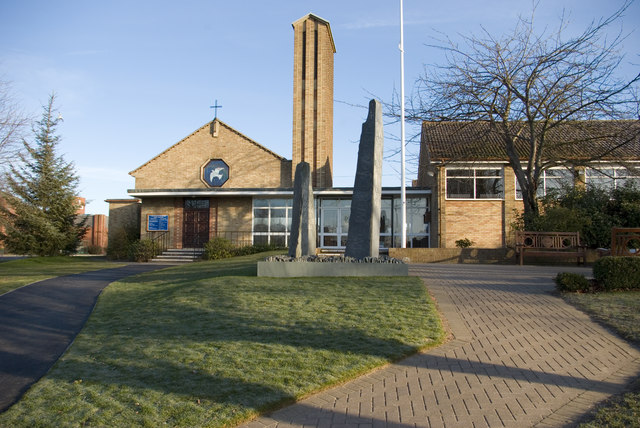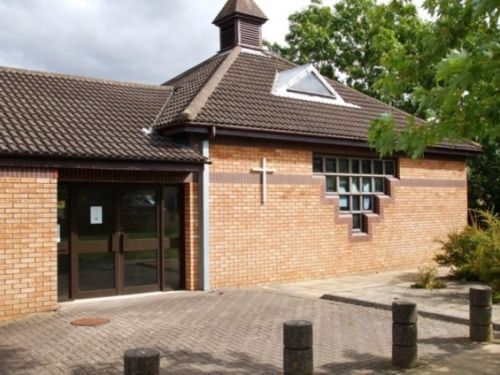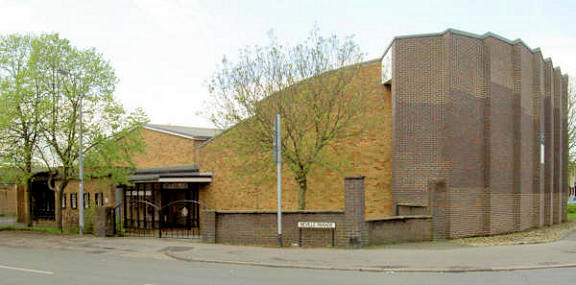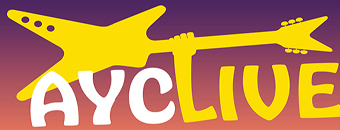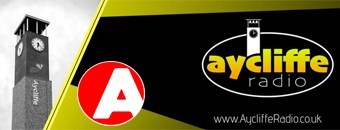On Saturday, 27th October, the last Parish Mass was celebrated in St. Joseph’s and it was packed to capacity. The Mass was a joyful occasion and one of celebration in thanksgiving for the priests and people who have served in St. Joseph’s over the last 44 years.
In his homily, Fr. Campion personally thanked all those (living and dead) who had given of their time and talents in the building up of the parish. The hymns had been carefully chosen to reflect this special celebration and the last hymn “Faith of Our Fathers” was sung with great gusto by all present.
Sunday Mass times in Newton Aycliffe are now on Saturday (Vigil) at 5.30pm in St. Mary’s and Sunday morning at 10.00am in St. Mary’s. Fr Campion also celebrates a Vigil Mass (Saturday) at 4.00pm in St. Thomas’s, Shildon.
In 1948 when the “new town” of Newton Aycliffe was born, the nearest Catholic church was St. Thomas Aquinas, Darlington, and Sunday Mass was supplied from there. In 1954 Newton Aycliffe was formally made a parish and Fr. Martin McBrien was appointed parish priest and initially lived in a rented house in Shafto Way. He decided to build a church and presbytery first and St. Mary’s Church was opened in 1960 followed by the opening of St. Mary’s primary school in 1962. The town was expanding rapidly and the Catholic population was also increasing.
In 1967, Fr. McBrien was replaced by Fr. Dennis Anderson. During his time in Newton Aycliffe, it had been decided to build another school to the west of the town centre to accommodate the ever growing town most of which was in that area. St. Joseph’s school was opened in 1968 with lots of land to allow further building on the site, if needed. St. Joseph’s school hall was used as a Mass centre and Fr. Joseph Devlin came here in 1968 to look after the parishioners in this area of the town.
In 1973, Fr. Harry Ryan was appointed parish priest of St. Joseph’s and Mass continued to be celebrated in the school hall. In 1980, Fr. Ryan moved to St. Mary’s on the town and was replaced at St. Joseph’s by Fr. Patrick Kennedy.
By the early 1980s, it was clear that the town would settle at a population of just under 30,000 (much less than was originally envisaged) so the Bishop indicated that no new church would be built at St. Joseph’s. Instead, a handsome granite chapel was added on to the school hall and was officially opened by Bishop Owen Swindlehurst on 13th July 1984. The architect was W.H.R. Pattisson of Newcastle and, indeed, he won an award for the design of St. Joseph’s Chapel.
Fr. Kennedy oversaw the building of the chapel and everything was chosen very carefully, he wanted to use materials from local sources as much as possible. Without doubt, the chapel was his ‘pride and joy’ and it was affectionately known as ‘Paddy’s Wigwam’ because of the shape of the chapel and its conical roof.
In 1992, both priests moved and Fr. Ryan was replaced by Fr. Michael Weymes. In 1997 the parishes were united under Fr. Weymes. In 2000, Fr. Weymes left and was replaced by Fr. James Dunne. Bishop Ambrose asked Fr. Jim to complete the parish’s progress into a single unit and to encourage the people in each area of the town to work together. This he did until he left in 2008.
Fr. Michael Campion replaced Fr Dunne in 2008 and since then has continued the work of uniting St. Mary’s and St. Joseph’s. He has given parishioners a vision for the church of the future in light of the reducing number of priests in the diocese.
This is now leading to the amalgamation of the parish in Aycliffe with St Thomas’ in Shildon which Fr Campion has been serving for the past year. Although the closure of St. Joseph’s Chapel is tinged with sadness, it takes place in this wider and challenging context and brings with it the opportunity for the Catholic community of Great Aycliffe to come together and worship as one in St. Mary’s Church, the MotherChurch.


